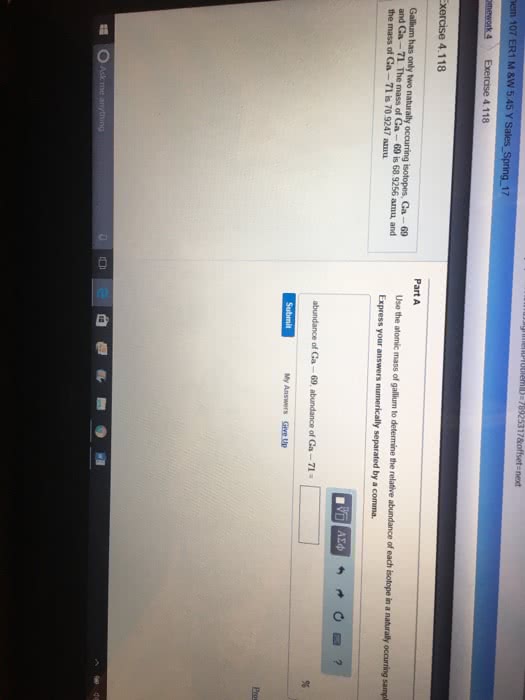CHEM101 Lecture Notes - Lecture 3: Atomic Mass, Natural Abundance, Photon

77
CHEM101 Full Course Notes
Verified Note
77 documents
Document Summary
Chem 101 - lecture #3 - atomic structure pt. This is because mass is converted to energy (e = mc2) in the formation of the nucleus - mass defect. Nb while isotopic mass are fractional, mass number must be in whole. Atomic mass of an element is the average of its isotopic masses. Atomic mass = (fractional abundance of isotope mass of isotope) 1 gallium has two naturally occurring isotopes, 69ga (isotopic mass 68. 9256 amu, abundance 60. 11%) and 71ga (isotopic mass 70. 9247, abundance, Ans: atomic mass = (68. 9256 0. 6011) + (70. 9247 0. 3989) Nb 4 significant digits, because 68. 9256 0. 6011 = 41. 43 amu, thus the product requires 4 significant digits. 2 boron (z = 5) has two naturally occurring isotopes: 10b and 11b. If the atomic mass of boron is 10. 81 amu and the isotopic mass of 10b = 10. 0129 amu and 11b = 11. 0093 amu, calculate the natural abundance of each isotope. Ans: atomic mass of b = 10. 1 amu.


